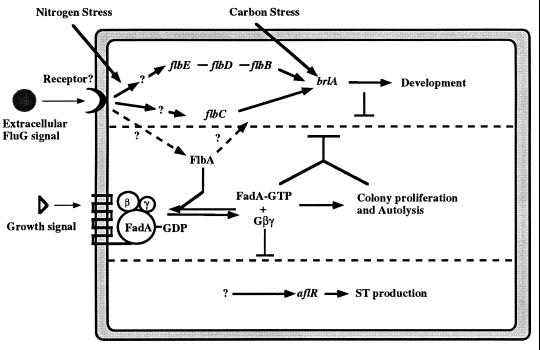FIG. 13.
Model describing fluffy gene interactions in controlling initiation of development. As described in the text, we have proposed that the activities of two antagonistic signaling pathways determine whether development and secondary metabolism occur (70, 86, 173). One pathway requires the product of FluG activity, which is proposed to work as an extracellular signal to activate a sporulation-specific pathway that requires flbB, flbC, flbD, and flbE. When the FadA Gα protein is GTP bound, it regulates downstream effectors to enhance proliferation and repress both sporulation and ST production. The FluG signal causes inactivation of FadA by activating FlbA, which functions as a GTPase-activating protein to turn off the FadA-dependent signaling pathway. This inactivation of FadA then allows both sporulation and ST biosynthesis to occur.

